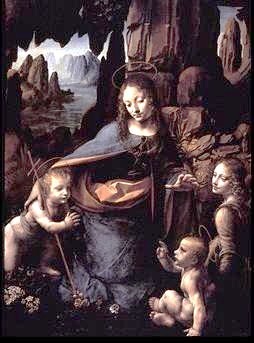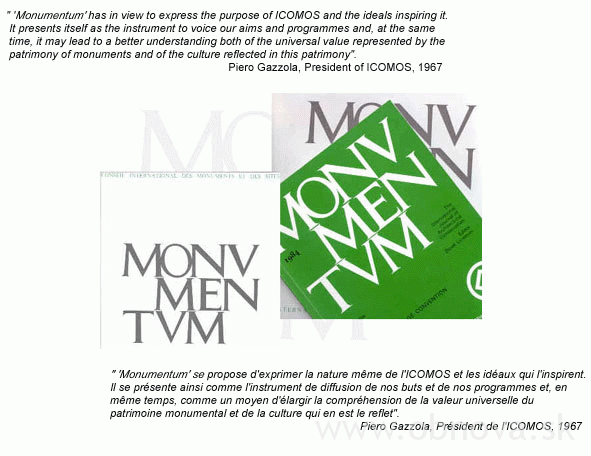Mona Lisa X-Rayed

Likely the world’s most famous and widely reproduced painting, da Vinci’s Mona Lisa is currently undergoing high tech exams under microscopes and x-rays for a reported warp in its wood panel support. Leonardo’s commission for the portrait began around 1505, and the slow, delicate execution took around 4 years to complete.Also known as La Giaconda, the painting depicts Lisa Gherardini, wife of prominent Florentine Francesco del Giocondo. La Giaconda was last x-rayed in the 1950’s, when there were less high tech methods for determining precise paint composition, etc. Articles on what otherwise could just be routine conservation efforts are almost interesting for what they lack. The art jargon used in most reports is too vague, and sometimes outright clueless, for a professional or even a conservator to understand the nature of the alleged problem. While surely not everyone in journalists’ audience are going to know the technicalities of old master painting, certainly writers covering the art beat could have enough education and background to understand something of it themselves. The mechanics of painting technique are quite simple, and, to paraphrase Ingres, can be taught in hardly one week. Yet even a presumably “scientific” source can get a great many things completely wrong, while quoting “experts” who are actually almost quoting E.H. Gombrich word for word. Mona Lisa has an elusive smile of sorts? You don’t say. In the 19th century, John Singer Sargent defined a portrait as “a likeness in which there was something wrong about the mouth.” A little more info, and actual news, on the apparent warping of its panel or damage to its tempera and oil paint films would be more pertinent than clueless, romanticized rehashing of well known points and popular misconceptions. Even worse are inexcusable omissions or dismissals of well-known facts, like Mona Lisa’s not smiling.
The identity of the model is not known? That has been known for 500 years. Both titles, Mona Lisa and La Giaconda, are the name of the sitter and designate her as the wife of Leonardo’s patron. Similarly, many of this week’s articles refer not only to cliches like darkened “layers of varnishes” and possible “fading,” but to the atrocious, factually and art historically illiterate trash bestseller, The Da Vinci Codes. Numbers of gallery visitors are up at the world’s biggest museum and heavily trafficked tourist destination because of some trash novel? Hmm, I smell a product plug. Worst of all are projections of contemporary gender/identity/Marxist politics onto a 500 year old painting–the actual, female “subject” of the painting (Lisa Gherardini) is known only by the gods from outer space who built the pyramids and produce crop circles, therefore the Mona Lisa can only be a transsexual self-portrait of Leonardo. That must have been quite a shock to the “unknown” patron who commissioned this portrait, picture his reaction when he found not the cutting edge High Renaissance portrait for which he paid, but the titteringly “transgressive” spectacle of Leonardo da Vinci in drag. Tee hee hee. The sheer stupidity of such an assertion must be lost on people who can’t tell the difference between an oil painting and a book of Post-modernist jargon, nor of lies about the mostly widely known art history that make Erik Von Doniken look like pure genius. What’s interesting about the portrait format itself, as developed from Bellini through Leonardo, Raphael’s Portrait of Baldasare Castiglione, and later Rembrandt and the modern artists, is that portraits are often “secret self portraits” by default. That’s part of the unavoidable stamp of the artist’s individuality. Place side by the side the portraits of Philip of Spain painted during the same period by both Velazquez and Rubens, and note how little they resemble one another despite the fact that they represent the exact same subject matter. Supposedly Van Dyck could not paint the hand of a laborer, nor Brueghel that of a gentleman. These are inescapable differences of personal temperament. They hold true even when the subject matter is a different gender than the painter. Only someone who seriously needs to get out of the college cultural studies department and get a life could think that likewise Mona Lisa is a “secret homosexual” self-portrait of Leonardo. In his unfinished Treatise on Painting, Leonardo cautions young artists to familiarize themselves with their own body types and proportions and unlearn any unconscious projections that would inevitably creep into their work, lest a short, stout artist unconsciously draw only figures that are short and stout, or a tall, athletic artist draw only tall figures, and so forth. Real painting, as artists long before da Vinci and through Gauguin and Picasso have understood, is only truly done from memory, so this sort of unconscious self-projection can easily occur in the absence of a model to copy. Oddly, da Vinci’s text omits any lesson on painting “transgressive” self-portraits, nor where to buy fashionable Florentine dresses, wigs, or makeup, nor how to pull a fast one on a rich patron and give him a titteringly subversive, shocking, challenging, gender-bender portrait of the “the real you.” With any luck, the story of possible warps in Mona Lisa’s thin, poplar panel support will be easily analyzed and solved. The microenvironment of the climate-controlled glass case in which it is displayed should have prevented any moisture differences that could have caused the wood to expand or bend, so perhaps some small adjustments could solve this. Decades ago, before such technology existed, reputedly the Louvre would keep cool in the summers by opening the windows, so the painting has held up well over centuries of varying temperatures and moisture. Fresh scientific analysis of the painting’s pigments and the precise structure of its layers of underpainted tempera and oil would be of enormous interest to painters, scientists, historians, and countless Leonardo fans. Hopefully, this information will be published in a real, verifiable, historically accurate format, as more news items will concentrate on yet more bizarre disinformation about the most famous and widely known artist who ever lived, so famous that there are shelves full of reference materials on him at a resource known as the library. Next they’ll probably claim that Leonardo da Vinci hired gifted grey aliens, technically advanced millions of years beyond the painting knowledge of hack writers and college art majors, to execute his self portraits in drag while he was busy becoming the object of the dumbest conspiracy theory ever, and his few portrait sitters and patrons vanished into the same shroud of mystery as the air in some art writers’ heads.
Source: http://www.art-james.com/archives/mona-lisa-xrayed.aspx


